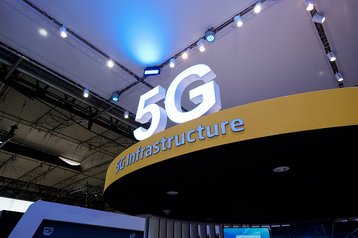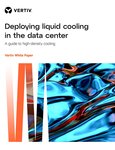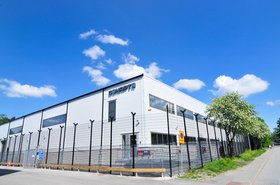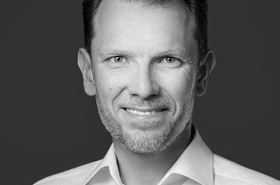5G and edge look set to underpin the next period of growth for telecoms and the wider technology industry.
But operators, and other telecoms industry players, are also acutely aware of the need to control energy consumption and carbon emissions amidst greater regulator and consumer scrutiny.
The hope is that the shift to 5G and edge will be positive from a sustainability perspective but so far there isn’t a clear consensus. Several organizations have been researching what the shift to 5G could really mean for energy and carbon intensity.
For example, Vertiv and 451 Research which recently released the results of a survey of global operators that showed 90 percent of respondents think 5G will result in higher energy costs. Vertiv’s internal models also reveal that the move to 5G is likely to increase total network energy consumption by 150-170 percent by 2026, with the largest increases in macro, node, and network data center areas.
However, telecoms industry consultancy STL Partners has also been researching the issue and argues that rather than just driving energy consumption, 5G could enable more efficient delivery per unit of data than older generation technologies.
DCD recently held an online debate, led by DCD’s chief marketing officer Dan Loosemore, with Vertiv’s technical director Jon Abbott and STL Partners’ consulting director Philip Laidler to dig into the topic in more depth.
Dan Loosemore, DCD: Experts forecast that 5G and edge will not only bring new revenue opportunities, but also new challenges around energy use, costs and sustainability. How do we ensure that greater energy efficiency, without impacting the resilience and reliability that our industry is so dependent upon?
Jon Abbott, Vertiv: So, let’s start with the backdrop. By 2030, 20 percent of all global electricity will be consumed by ICT. A huge number! So, in order to satisfy subscribers, it’s a prerequisite that the technology industry – including telecoms operators - become greener, more environmentally sustainable.
Millennials and Generation-Z consume more data than any other socioeconomic group but they also have a growing environmentally conscious. More than 85 percent of millennials will purchase products and services that have some environmental benefits but 40 percent will also boycott a product they see as not environmentally friendly.
How much energy efficiency, and overall sustainability, can we really build into telecoms networks?
Vertiv: Energy for the networks, I think, it’s being viewed as a necessary evil. Never quite part of the tech set, it’s a bit too frustrating and complex for estates as a question. So we’re getting to the point where the level of energy consumed and forecast for the future is having a significant impact on profitability. That combined with corporate responsibility, those two pieces mean it’s being taken far more seriously. We’re moving away from the topic of energy being solely associated with quality of service and network availability.
Phil Laidler, STL: We did some analysis to look at 5G and how it could help with global emissions. We think that global mobile data volumes are going to continue to grow. If you take that assumption and say we are not going to do any 5G roll-out, we are simply going to stick to 4G radio and existing spectrum and technologies, that growth in data translates into growth in energy and energy cost but also growth in carbon emissions. Even with assumptions of grid decarbonization, and greater efficiencies being achieved within 4G networks you still see a very significant growth in energy consumption. If you are adding 20 to 30 percent of the volumes on the core and at the edge then you are going to have to support that volume with more energy.
This is an incredibly complex task so there are some simplifications and assumptions here but there are some underlying truths about 5G technology. There will be some savings on the 5G core - which are relatively small – but are the main savings will be down to new radio which is about ten times more efficient in terms of kWh per Mbit delivered than a comparable 3G or 4G solution.
What’s your forecast of net reduction or increase and how much efficiency can we build into the system?
Vertiv: Vertiv’s prediction that the move to 5G is likely to increase total network energy consumption by 150-170 percent by 2026, combined with increased corporate responsibility, means that energy efficiency is being taken far more seriously.
As an industry we’re moving away from the topic of energy being solely associated with quality of service and network availability. Optimizing energy consumption alone won’t be enough for a significant net decrease. We could, however, get around this if passive infrastructure were to be viewed as an energy network as it’s a landscape where the ‘prosuming’ of energy and stored energy (batteries) are a prerequisite.
Another way is to see the continued deployment of renewables. The way we look at renewables, considered as a remote site without a reliable utility connection, is beginning to change. In fact, 21 percent of respondents to our recent 5G survey said that the total power consumed by data centers in 2025 will come from wind and solar, and leading developers have committed to leveraging their scale to forge a path that has the potential to raise the overall use of renewable energy by data centers globally.
Telcos are used to operating the comms network end to end. Is it imperative they manage energy in the same way?
Vertiv: This conversation is almost circular, because the connectivity and intelligence you need for interoperability isn’t available yet. That’s where 5G comes in. It’s going to give us ten times the number of subscribers, and increase machine-to-machine capability. The interoperability should work in the same way the smart grid does with the utility network–there’s a lot of synergy here.
The energy network is decentralizing to defossilize, and the amount of large scale production sites are reducing. It’s becoming more renewable-oriented, but there still must be connectivity between the resources to manage the demand. The same should happen for the telco network. Using the example of blockchain for solar cells in the United States, there are solar cells on rooftops of apartment blocks and blockchain will allow residents to trade energy between each other. Essentially the network should be working in the same way as this; it’s about harmonizing it. But quite how that’s monetized, or collaborated upon, is yet to be seen. Now, everybody just sees renewables as a way we can have less reliance on utility.
So, what does this market look like in five to ten years? How do operators deploy 5G technology – and realize the true benefits - whilst also hitting sustainability goals?
Vertiv: I agree, there must be more added value for the future of 5G. From an energy perspective, if we’re talking ten years ahead, I expect complete interoperability across smart grids, smart cities, housing, utilities, and the data behind them. Energy is a precious resource and it must be ensured it isn’t exclusively used by one person in the future. It’s the coordination age.
STL: Over the last 100 years the telecoms industry has been trying to meet what we call the ‘communications age’ which is having interpersonal communication; that has largely been achieved but all the value has gone out of that. The next wave of innovation has been around the information age which has been about accessing content and information mainly through smartphones. That isn’t completely as an exercise but is largely on its way.
The next stage is what we defined as the coordination age and that is as Jon says bringing coordination beyond the connections but brings the interoperability to make the world and our lives better connected. There is a role for operators to play there and the great thing that 5G introduces is the ability to design deterministic networks and solutions and services that work with that coordination rather than against it. Stepping up to that, which networks will allow, will deliver that fundamental change in global efficiency that we need.




